If ever you happen to be in or near the city of Mechelen in Belgium this Spring (Spring starting in February courtesy of global warming of course), don’t miss a small but incredibly fascinating show at WINDOWBOX #, an artist-run space a short walk away from the splendid Saint Rumbold’s Cathedral.
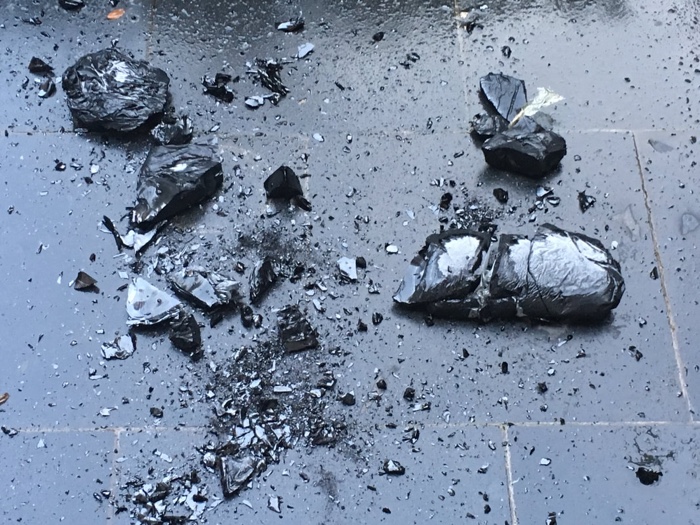
Kaat Van Doren, MIROIR NOIR, 2017
The exhibition was curated by Sue Spaid and changes according to temperature. As for the title, “Climate Surprise”, it subtly echoes the rise of extreme and unpredictable climate events that have brought about scientific studies of how “climate surprise” impacts human behavior and health but also environmental policymaking.
I was particularly fascinated by the use that Kaat Van Doren, one of the two artists in the show, has made of bitumen, a material most of us would normally overlook. Because it is used for road surfacing and roofing, bitumen appears mundane and unsophisticated. And because the majority of the bitumen used commercially is a residue from petroleum distillation, we might view it as an inert and nasty material.
Van Doren, however, saw the artistic potential of the material. When the weather is cold, it becomes hard and brittle, its surface appears shiny and glass-like. When sun rays hit bitumen however, it gets more pliable and spreads a golden glow. The wonders of bitumen don’t end there. While visiting the show, i was told about the pitch drop experiment, an excruciating long-term experiment that aims to demonstrate the high viscosity or low fluidity of bitumen (which is a form of pitch, hence the name of the scientific exercise.) The material appears to be solid at room temperature, but is in fact flowing extremely slowly, taking several years to form a single drop.
The Pitch Drop Experiment – University of Queensland, Pitch Drop Time Lapse 2 years to date
The artist thus experimented with the various material dimensions of bitumen in photos and sculptures.
The most spectacular one is the giant Mirror Noir she made by spraying with bitumen an abandoned gas station in Campus Coppens, a former military site near Antwerp in Belgium. She covered both the inside and the outside the disused building, creating a striking contrast with the vegetation that had started to regain ground after human activities left the area.
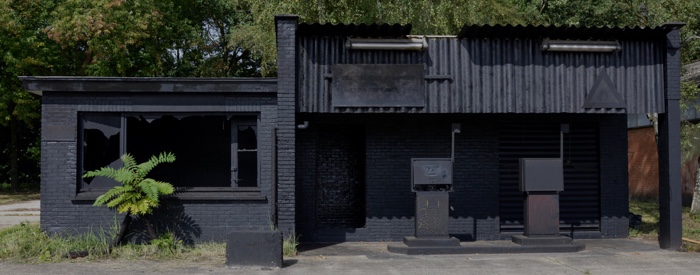
Kaat Van Doren, MIROIR NOIR. In situ installation at Campus Coppens site, 2017
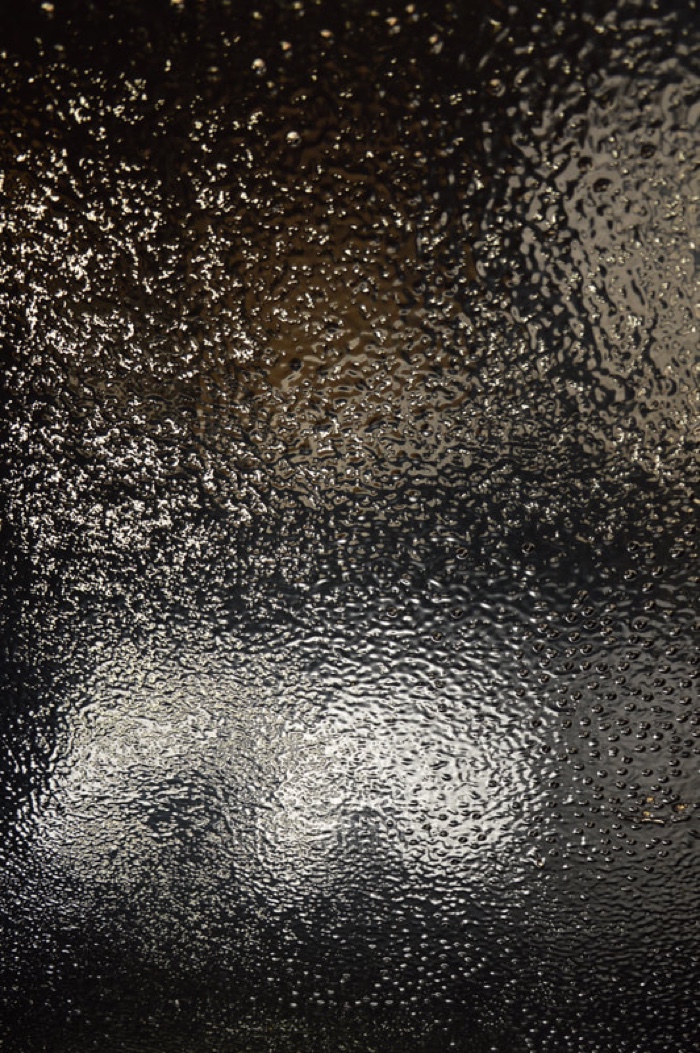
Kaat Van Doren, Miroir Noir inside 17092017 / 11.18 h
I was amazed by the poetry of the result. Bitumen, after all, is a sticky form of crude oil, a liquid i had come to associate with all the ills and evils of this world. As the artist explains on the page of the project:
Thanks to the special properties of bitumen the gas station Miroir Noir is not a finished product but a constantly evolving work, as the material remains susceptible to the impact of climatic aspects. Miroir Noir is both a reflection of and witness to the (in)visible processes of change in which we are all entangled: political, economic, climatological and ecological waves propelled by history.
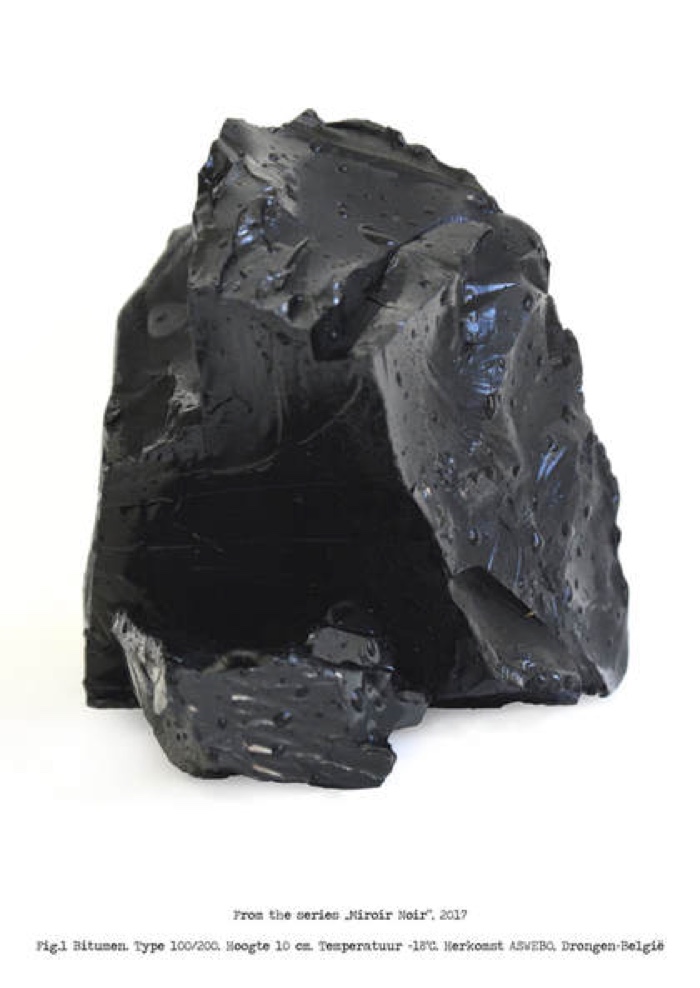
Kaat Van Doren, From the Bitumina series, 2017
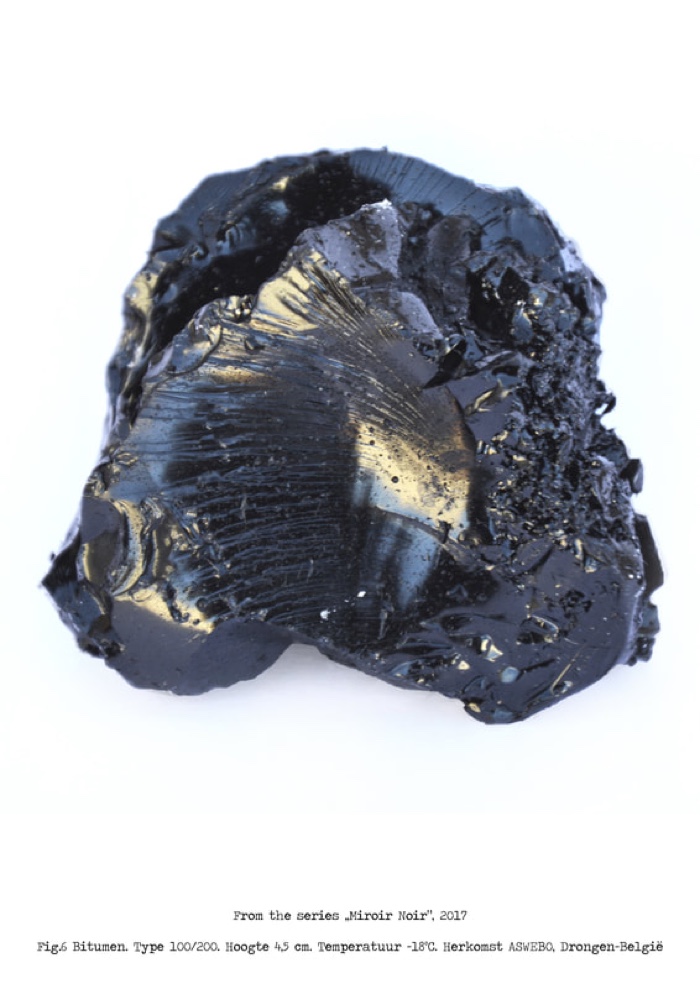
Kaat Van Doren, From the Bitumina series, 2017
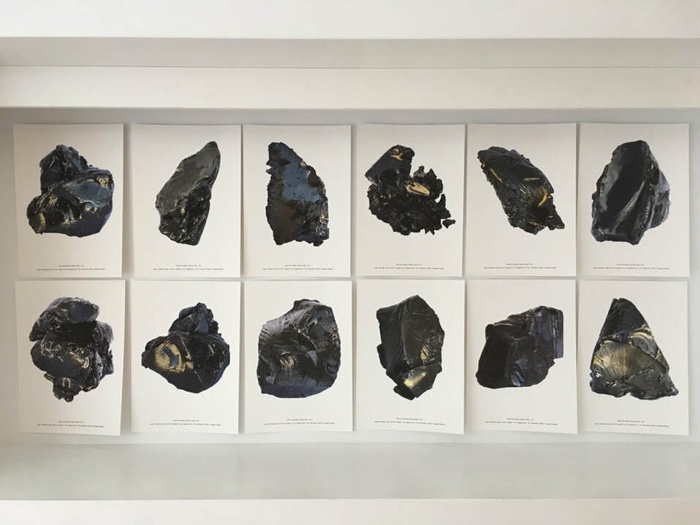
Kaat Van Doren, From Bitumena series, Fig.1 to 24 (of 32), 2017
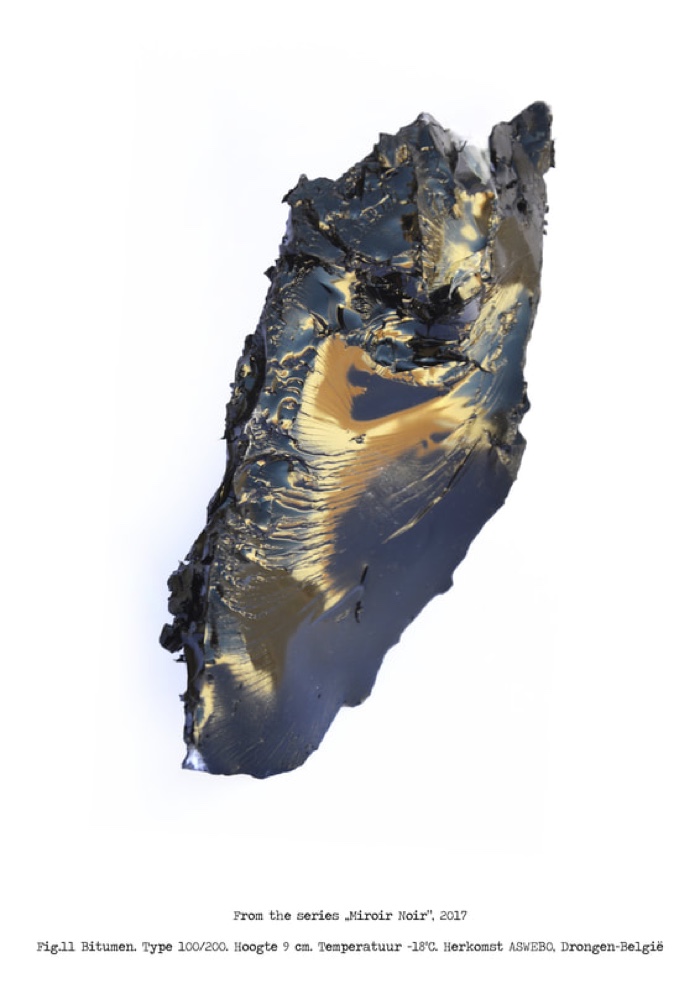
Kaat Van Doren, From the Bitumina series, 2017
The title of Van Doren’s series alludes to a painter’s tool called Mirror Noir. Also named Claude glass (or black mirror), this portable mirror was slightly convex and its surface tinted a dark colour. Picturesque artists in England in the late 18th and early 19th centuries used it as a frame for drawing landscapes. They would turn their back on the scene to observe the reflection of the scenery in the mirror. The tinted surface reduced the colour range and precision, evoking the paintings of 17th Century landscape painter Claude Lorrain.
The black mirrors of our times are of course the black screens of our tablets and phones. The reflection of reality they produce is much sharper than the black mirrors of 19th century landscape painters but they nevertheless provide us with an experience that is more mediated (and sometimes even manipulated) than real.
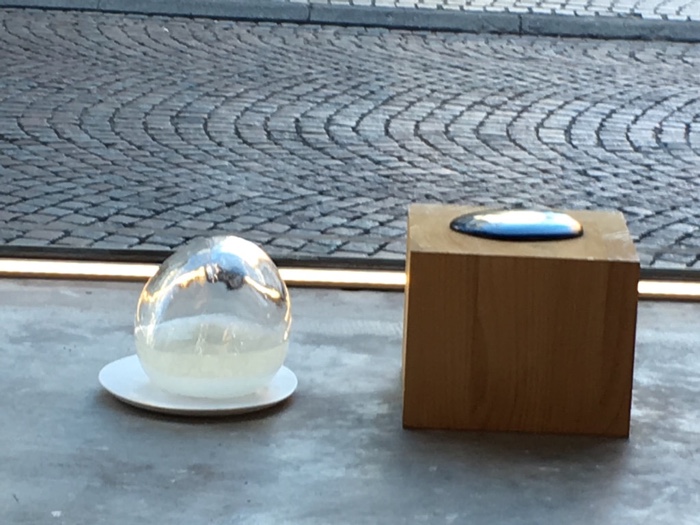
Isabel Fredeus, Under the Weather #1 and #2, 2018
The other artist in the show is Isabel Fredeus. She explored another tool from the 19th century: the storm glass. This instrument was invented to help ship captains predict weather and thus the storms much dreaded by sailors. Her hand-blown storm glass sculptures also visibly react to weather, becoming more animated as temperatures rise.
Since i visited the show, it went through some changes. Just like the weather. The new iteration of Climate Surprise is sub-titled Heating Up!”. Here’s a few photos from the latest version:
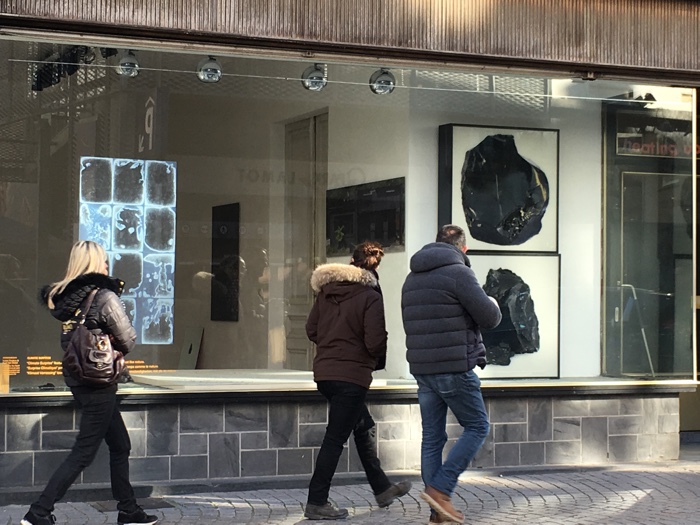
Climate Surprise, Heating Up! Image courtesy of Kaat Van Doren
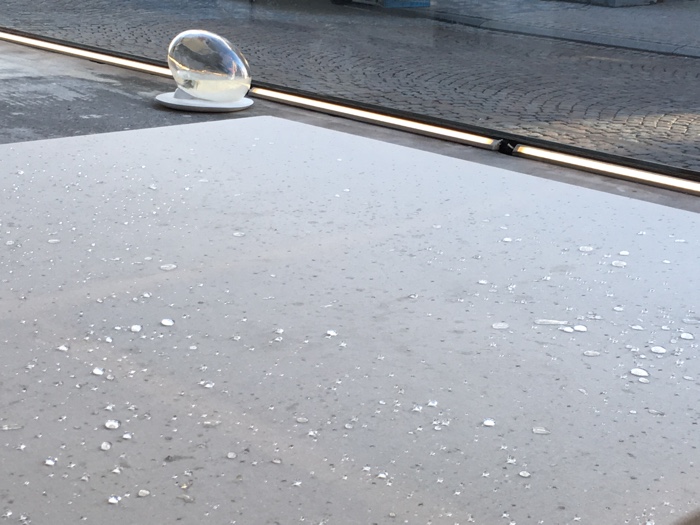
Climate Surprise, Heating Up! Image courtesy of Kaat Van Doren
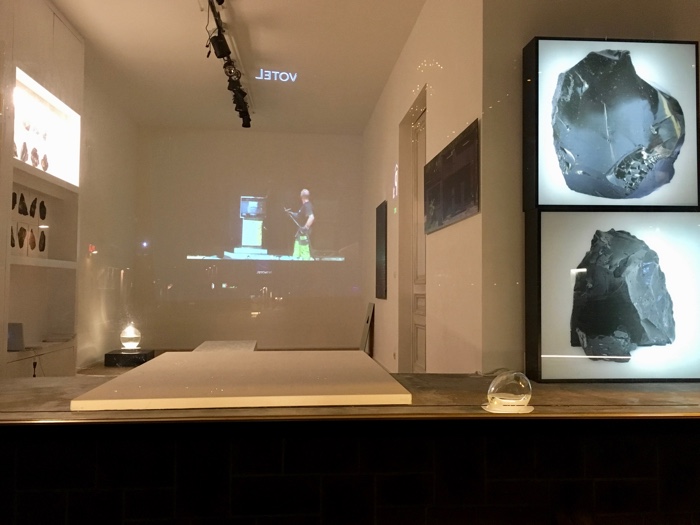
Climate Surprise, Heating Up! Image courtesy of Kaat Van Doren
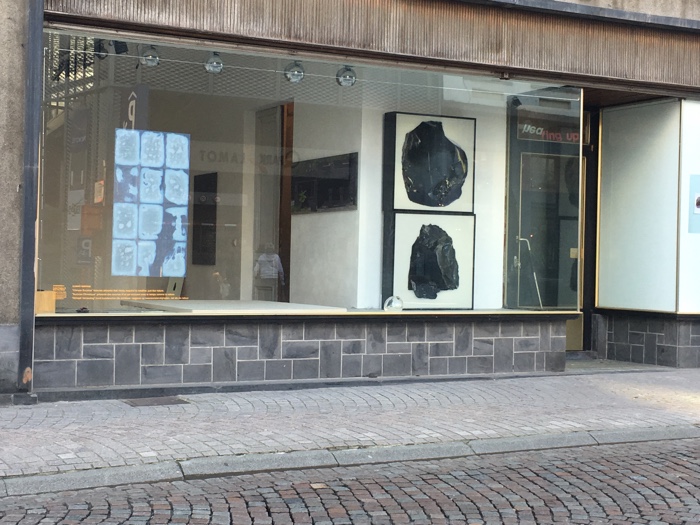
Climate Surprise, Heating Up! Image courtesy of Kaat Van Doren
Climate Surprise is curated by Sue Spaid. The show runs until 05 May 2019 at WINDOWBOX #, an artist-run space in Mechelen, Belgium. You can experience the changing exhibition through the gallery window as you walk by or take an appointment to enter and visit the show. There will be an event on Sunday 05 May 2019 to mark the closing of the changing exhibition.
